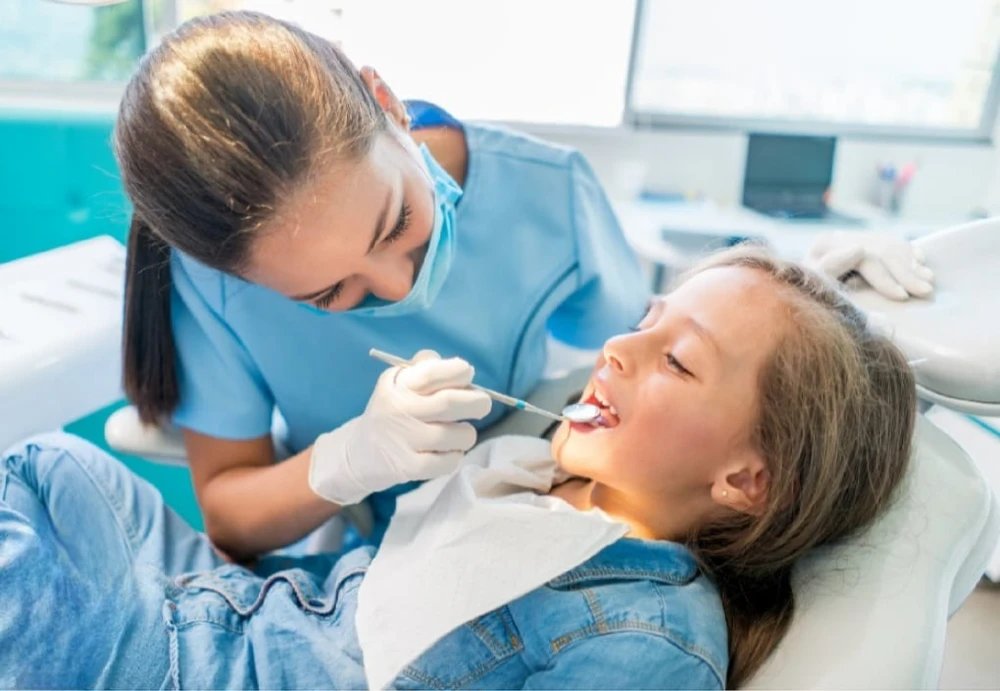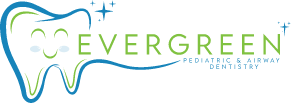Airway Dentistry Safety: How to Ensure Your Comfort and Well-being
Ensuring your child’s dental health is about more than just a bright smile—it’s also about their overall well-being. Airway dentistry focuses on maintaining clear and healthy airways during dental treatments, which is crucial for your child’s comfort and safety. Understanding the importance of airway dentistry safety and how they can help parents make informed decisions and ensure their kids receive the best possible care.
Understanding the Fundamentals of Pediatric Airway Dentistry
Pediatric airway dentistry is a specialized field that addresses the unique needs of children’s airways. It involves using techniques and tools designed specifically to keep airways open and unobstructed during dental procedures. This is particularly important for children, as their airways are smaller and more susceptible to obstruction. The methods used in pediatric airway dentistry often include advanced monitoring and sedation techniques tailored to each child’s needs, ensuring their safety and comfort.
By focusing on airway health, pediatric dentists can prevent complications such as airway collapse or restricted breathing, which can arise during dental treatments. This approach not only promotes safer, more effective treatments but also helps in reducing anxiety and stress for both the child and their parents. Furthermore, maintaining a clear airway can improve overall health outcomes by ensuring adequate oxygenation and lessening the risk of long-term respiratory issues.
Educating parents about the importance of airway health and its impact on their child’s development is also a key component of pediatric airway dentistry. This holistic approach underscores the significance of a multidisciplinary effort to enhance the well-being of young patients.

Airway Dentistry
Common Challenges and Risks in Dental Treatments for Kids
Dental treatments for children come with their own set of challenges and risks, which can be more complex compared to those encountered with adult patients. One of the primary challenges is managing the child’s fear and anxiety related to dental procedures. Many children may have a heightened fear of the dentist, which can result in resistance and non-cooperation during treatments, adversely affecting the procedural outcome.
Another significant concern is the risk of airway obstruction. Children’s smaller airways and anatomical structures make them more susceptible to blockages, especially when using dental instruments and sedation. If not properly managed, these obstructions can lead to serious complications such as reduced oxygen levels and, in extreme cases, respiratory distress.
In addition, children often have difficulty keeping still for extended periods, making precision work more challenging for the dentist. This can complicate procedures like fillings, extractions, or the application of sealants, potentially leading to longer procedure times and increased discomfort for the child.
Furthermore, the use of sedation in pediatric dentistry carries its own set of risks. While sedation is often necessary to ensure the child’s comfort and compliance, there is always the potential for adverse reactions. Dentists must be well-versed in the appropriate dosages and monitoring techniques to mitigate these risks, ensuring the child’s safety throughout the procedure.
Lastly, the natural tendency of children to place objects in their mouths raises the risk of cross-contamination and infection. Ensuring that all tools and surfaces are thoroughly sterilized is crucial to prevent any post-treatment infections or complications.
In conclusion, while dental treatments for children present unique challenges and risks, careful planning, specialized techniques, and a thorough understanding of pediatric airway management can help mitigate these issues, resulting in safe and effective dental care for young patients.
How to Identify Signs of Airway Obstruction in Children
Recognizing the signs of airway obstruction in children is vital for ensuring their safety during dental treatments. Some of the common indicators that parents and caregivers should be aware of include:
- Difficulty Breathing: If a child is having trouble catching their breath or if their breathing seems labored or noisy, it could be a sign of airway obstruction. This may manifest as wheezing, gasping, or stridor (a high-pitched sound during inhalation).
- Cyanosis: A bluish tint to the skin, especially around the lips and fingertips, is a serious sign that the child is not getting enough oxygen. Immediate medical attention is required if cyanosis is observed.
- Changes in Consciousness: If the child becomes unusually sleepy, confused, or loses consciousness, these could be indications of a lack of oxygen reaching the brain. Such symptoms should be taken very seriously.
- Choking or Gagging: Frequent choking or gagging during meals or while playing can also signal an obstruction. This is especially concerning if it happens often or without obvious cause.
- Persistent Cough: A continuous, unproductive cough can be a response to an obstructed airway. This type of cough is often different from the usual cough associated with colds.
- Swallowing Difficulty: Trouble swallowing food or liquids and a tendency to avoid eating are other symptoms that can point to an airway problem.
- Snoring or Noisy Breathing During Sleep: Loud snoring, gasping, or periods of breath-holding during sleep may indicate obstructive sleep apnea, a condition where the airway intermittently collapses during rest.
- Restlessness or Agitation: A child who seems unusually fidgety, anxious, or agitated might be struggling to breathe properly, leading to discomfort and distress.
If any of these signs are observed, it is crucial to consult a healthcare provider immediately. Early intervention can prevent serious complications and ensure that the child receives the necessary care to maintain a clear and healthy airway.

Pediatric Airway Treatment
Best Practices and Latest Innovations in Ensuring Kids’ Comfort and Safety During Dental Visits
Ensuring the comfort and safety of children during dental visits is paramount and can be achieved through a combination of best practices and innovative techniques. One of the most effective approaches is creating a child-friendly environment in the dental office. This includes having waiting rooms equipped with toys, books, and entertainment to distract and comfort the child before their appointment. Friendly and patient-centric staff trained in pediatric care also play a significant role by establishing a welcoming atmosphere and reassuring anxious young patients.
Communication is another critical component. Dentists and their teams should use age-appropriate language to explain procedures, helping to demystify the process and reduce fear. Techniques such as “tell-show-do” can be very effective, where the dentist explains the procedure (tell), demonstrates it on a model (show), and then performs the procedure (do), thereby building the child’s trust and understanding.
The use of sedation and anesthesia has seen significant advancements as well. To ensure safety, newer medications and monitoring technologies are being employed that allow precise control over sedation levels, minimizing risks and enhancing the child’s comfort. Furthermore, non-invasive options like nitrous oxide (“laughing gas”) provide effective relaxation without deep sedation, making it easier for children to cooperate during their dental visit.
Digital technology and minimally invasive techniques have also revolutionized pediatric dentistry. Laser dentistry, for instance, offers a less intimidating alternative to traditional drills, reducing pain and anxiety while promoting faster healing. Additionally, the use of digital imaging allows for more precise diagnostics, reducing the need for repeat visits and thus minimizing stress for both child and parent.
Moreover, preventive care has become a focal point in modern pediatric dentistry. The emphasis is on educating parents and children about oral hygiene practices that prevent the need for more invasive procedures. This includes the application of dental sealants, fluoride treatments, and regular check-ups to maintain optimal oral health and catch any potential issues early.
In conclusion, the integration of these best practices and latest innovations ensures that pediatric dental care is not only effective but also compassionate and child-centered. With ongoing advancements in the field, the goal is to create a positive dental experience that lays the foundation for a lifetime of good oral health.
The Role of Parents in Promoting Airway Health and Preventing Dental Complications for Kids
Parents play a crucial role in promoting their children’s airway health and preventing dental complications. Instilling good oral hygiene practices from an early age is essential. Parents should supervise their children’s brushing and flossing routines, ensuring they use the correct techniques and do so twice daily. Regular dental visits, ideally every six months, are necessary to catch any potential issues early and to receive professional cleaning and fluoride treatments.
Aside from dental hygiene, parents should also be vigilant about their child’s overall airway health. This includes monitoring for any signs of breathing difficulties, such as snoring or mouth breathing, which can indicate underlying issues like sleep apnea or enlarged adenoids. Encouraging healthy eating habits is another fundamental aspect, as a balanced diet low in sugar can prevent cavities and reduce the risk of dental diseases.
Parents need to be aware of the impact that habits such as thumb-sucking and prolonged pacifier use can have on the oral and airway structures. These habits can lead to dental malocclusions and narrower airways, complicating both dental health and breathing. Consulting with a pediatric dentist for advice on the best ways to curb these habits is beneficial.
Actively engaging in a dialogue with healthcare providers, including pediatricians and dentists, can provide valuable insights into maintaining both dental and airway health. This collaborative approach ensures that any concerns are promptly addressed, and preventive measures are continuously reinforced. By taking these proactive steps, parents can help establish a foundation of good health practices that their children will carry into adulthood.

Airway Health
How to Choose a Pediatric Dentist Who Prioritizes Airway Health for Kids
Choosing the right pediatric dentist is crucial for ensuring comprehensive care that includes a focus on airway health. Here are some key considerations to help parents make an informed decision:
- Qualifications and Specializations: Look for a pediatric dentist who has specialized training in airway health and sleep medicine. This may include certifications or additional courses in areas such as pediatric sleep disorders, orthodontics, or myofunctional therapy.
- Holistic Approach: Opt for a dentist who takes a holistic approach to oral health, considering the overall well-being of your child. This should include assessments of the airway during routine dental check-ups and treatments tailored to ensure proper breathing and jaw development.
- Experience and Expertise: Experience matters, especially when it comes to complex issues like airway health. Inquire about the dentist’s experience in diagnosing and treating conditions such as sleep apnea, mouth breathing, and other related concerns.
- Multidisciplinary Collaboration: A dentist who collaborates with other healthcare providers, including pediatricians, ENT specialists, and sleep therapists, can offer a more comprehensive care plan. This team approach ensures that all aspects of your child’s health are considered.
- Patient-Centric Communication: Find a dentist who communicates effectively with both parents and children. They should be able to explain procedures and health implications in an age-appropriate and reassuring manner, helping to ease anxiety and build trust.
- Reviews and Recommendations: Research reviews and seek recommendations from other parents or healthcare providers. Hearing about others’ experiences can provide valuable insights into the dentist’s commitment to airway health and overall care quality.
- Office Environment: Visit the dental office to assess the environment. A child-friendly, welcoming atmosphere can make a significant difference in how comfortable your child feels during visits. Check if the office is equipped with advanced technology for diagnosing and treating airway issues.
- Preventive and Conservative Treatment Philosophy: Choose a dentist who emphasizes preventive care and adopts conservative treatment methods when possible. Preventive measures, such as educating parents and children about maintaining airway health, can help avoid more invasive procedures in the future.
By considering these factors, parents can select a pediatric dentist who prioritizes their child’s airway health, ensuring not only optimal dental care but also promoting overall well-being.
Conclusion
The link between oral health and airway health cannot be ignored, especially in pediatric care. Parents play a vital role in promoting good habits that can positively impact their child’s dental and overall health. Choosing a pediatric dentist who prioritizes airway health is crucial for ensuring comprehensive care and setting the foundation for long-term wellness. By staying proactive and advocating for their children’s health, parents can help ensure brighter smiles and easier breathing for their little ones. Therefore, collaboration between parents, healthcare providers, and dentists is key to achieving optimal oral and airway health in children.
Evergreen Pediatric Dentistry
https://www.google.com/maps?cid=14720788683151219551
12910 Totem Lake Blvd NE #103, Kirkland, WA 98034, United States
(425) 814-3196
https://evergreenkidsdentist.com/


